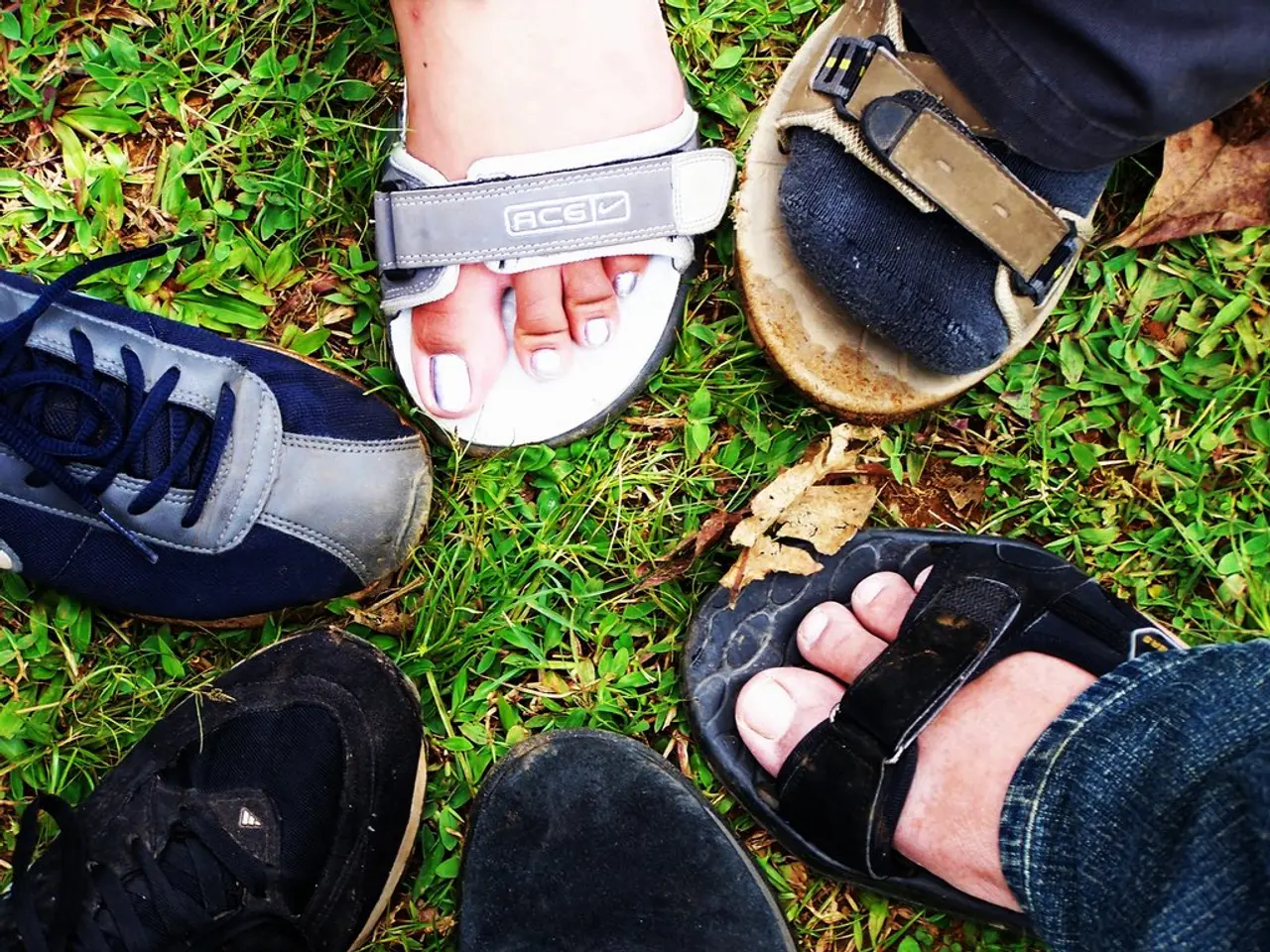Gout Walk, Safety Considerations: Potential Hazards, Advice, and Additional Facts
Gout, a common form of arthritis, can cause intense pain and swelling in the joints, particularly the big toe. However, regular exercise can help manage and prevent gout symptoms, provided it's done correctly.
Joint-friendly activities such as brisk walking, cycling, and swimming are recommended for people with gout. These low-impact or non-impact exercises help minimize stress on affected joints while improving joint mobility, muscle strength, cardiovascular health, and flexibility.
However, it's crucial to avoid exercising during acute gout attacks, when joints are inflamed and sensitive. Instead, rest the affected joint until symptoms subside. Once the flare-up has passed, prioritizing low-impact exercises can help reduce joint stress and avoid high-impact activities like running or jumping that can worsen symptoms.
Maintaining joint flexibility is also essential. Engage in mobility/range of motion exercises to keep joints supple and minimize stiffness. Resistance exercises can help strengthen muscles and support joint integrity, while stretching regularly improves flexibility and muscle strength.
Staying well-hydrated is another important factor in managing gout. Dehydration can trigger gout attacks, so ensure you drink enough water during and after exercise.
Before starting any exercise regimen, consult a healthcare professional. They can tailor activities based on gout severity, affected joints, and overall health.
Regular moderate exercise not only helps lower uric acid levels but also controls weight, enhances blood circulation, and reduces joint pain over time, contributing to gout symptom management and prevention.
Remember, gout symptoms include warmth, severe pain, swelling, and flushed skin in the affected joint. If you experience these symptoms, especially if they last for a prolonged time, contact a doctor. Treatment options are more effective in the early stages of a flare.
In addition to exercise, medications such as allopurinol, febuxostat, probenecid, and pegloticase may be prescribed to reduce uric acid levels and prevent future gout flares. During a flare, rest is recommended to reduce pressure on the joint, and good quality footwear offering cushioning and support is recommended for people with gout.
Chronic gout involves repeated flares that occur over a longer period, potentially leading to continuous pain and joint stiffness. Acute gout, on the other hand, typically involves isolated flares that cause intense pain and swelling, usually resolving within a few days to weeks.
In conclusion, while gout can be painful, regular exercise, along with a healthy lifestyle and medical treatment, can help manage and prevent symptoms. Always consult a healthcare professional for personalised advice and treatment.
References:
- Mayo Clinic. (2021). Gout. Retrieved from https://www.mayoclinic.org/diseases-conditions/gout/symptoms-causes/syc-20368476
- Arthritis Foundation. (2021). Gout. Retrieved from https://www.arthritis.org/diseases/gout
- National Institute of Arthritis and Musculoskeletal and Skin Diseases. (2021). Gout. Retrieved from https://www.niams.nih.gov/health-topics/gout
- American College of Rheumatology. (2021). Gout. Retrieved from https://www.rheumatology.org/I-Am-A/Patient-Caregiver/Diseases-Conditions/Gout
- Cleveland Clinic. (2021). Gout. Retrieved from https://my.clevelandclinic.org/health/diseases/16788-gout
- Ankylosing spondylitis, a form of arthritis related to gout, affects the spine and causes inflammation in the joints of the spine and pelvis.
- Regular exercise and a healthy lifestyle can help manage and prevent HIV, but proper medical care is crucial for successful treatment.
- Spondylitis, a type of arthritis, can cause chronic back pain and stiffness if left untreated.
- Hepatitis B can lead to chronic liver disease, and vaccination is recommended for prevention.
- Depression, a mental health disorder, often co-occurs with chronic diseases like hepatitis C.
- Eczema, a common skin condition, can cause itching, redness, and inflammation.
- Lung cancer, or NSCLC, is a type of cancer that begins in the cells of the lungs and is best managed with early detection and treatment.
- Bipolar disorder, a mental health condition, is characterized by episodes of depression, mania, and mood instability.
- Ulcerative colitis, a chronic inflammatory bowel disease, can lead to severe abdominal pain and cramping.
- Preparation before sexual activity (prep) can help prevent the spread of sexually transmitted diseases.
- Crohn's disease, a type of inflammatory bowel disease, can affect any part of the digestive tract and cause symptoms such as abdominal pain, diarrhea, and weight loss.
- Psoriasis, a chronic skin disease, is characterized by red, scaly patches on the skin.
- Migraine, a type of headache, is common and can be debilitating, requiring a predictive approach to treatment and management, similar to chronic kidney disease, respiratory conditions, and other chronic diseases. In the realm of health and wellness, fitness and exercise, nutrition, mental health, and sports, a holistic approach encompassing all aspects promotes overall well-being.




